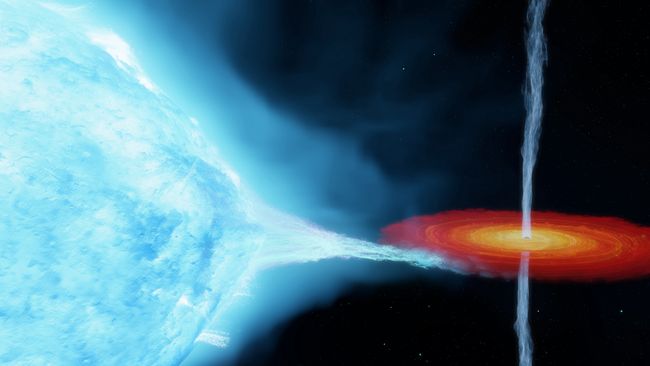Astronomers May Have Discovered Why Some Black Holes Have a ‘Heartbeat
A tiny fraction of known black holes emit X-ray signals that resemble a human “heartbeat.” Now, new research may finally explain the strange phenomenon.
Black holes aren’t alive per se but they show some characteristics of alive objects which include pulsing when they gobble up a lot of gas. Recently, several studies have provided the explanation as to how this unusual rhythm develops.

In binary systems, where a black hole orbits another star, the black hole can pull in gas from it’s neighbour. When the gas is ingested, it is compressed thereby raising its temperatures to astronomical levels in the process releasing a lot of X-ray radiation. This led to the discovery of black holes, among them the first X-ray source discovered and one of the brightest namely Cygnus X-1.
In such phases of feeding, which may take thousands to millions of years the black hole may occasionally go for a massive slump. This outburst is a burst of X-rays that occurs when a lot of material is consumed in a short time span.
Astronomers have observed many such flares, but some have shown an unusual pattern: the continuous oscillation of activity in the flare and is similar to the electrical signal that is observed when a human heart is monitored with an EKG. These pulses are what is called heartbeat flares.
Some of the scholars associated with the Key Laboratory of Particle Astrophysics at the Chinese Academy of Sciences in Beijing recently analyzed one such flares known as heartbeat flares aiming at publishing their analysis on arXiv which is lined up for publication in The Astrophysical Journal.
The flare that they considered was that from IGR J17091-3624, a black hole that is 28 000 light-years away from the Earth. In 2022, adopting this model and using X-ray data taken with NICER and NuSTAR, the authors identified unambiguous evidence for a heartbeat-like oscillation. One can note that they have established that these pulses are due to interaction and instabilities in a material that forms part of the black hole.
Laval follows where as matter falls into the black hole it forms a thin disk which is rapidly rotating. The inward part of this disk narrows towards the event horizon and the rest of the disk gives out X-ray emissions. This setup makes the situation rather unbalanced: on one hand there is the emission of photons from the disk, and on the other – black hole’s gravity.
A heartbeat pulse is elicited when the disk destabilises, and a ‘blob’ of material is ejected toward the black hole. This is achieved by releasing a huge blast of radiation that fired the heartbeat. It then radiates heat energy which makes the surrounding gas to stay aloft thus avoiding it to fall into the black hole. When this occurs, gas gets accumulated at a certain standard, leading to another beat or a heartbeat.
These heartbeat signals have been detected and are extremely rare only in two among the hundreds of identified black holes. But, researchers are willing to do more of them more because they comprise valuable information about the interplay between black holes and their surroundings.
Do not forget to share your opinion with us to provide you with the best posts !



0 Comments